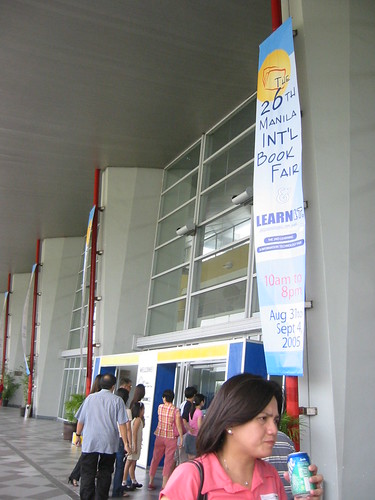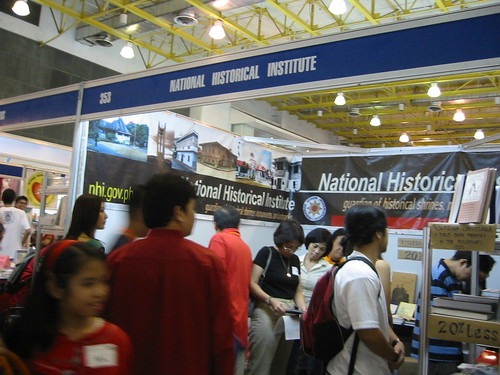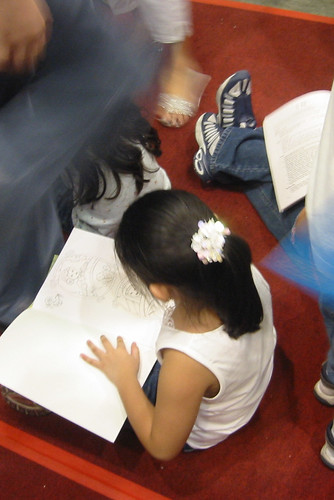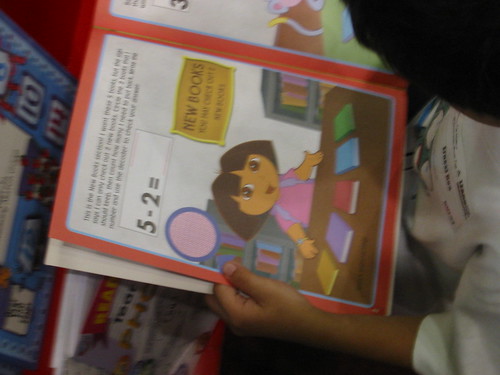UK Bound
A Book Safari: No I am not on my way to the United Kingdom to buy books.
The First Bookstore
Last Saturday, on the way to the mall I came across a second hand store along the old Aurora Arcade.
The two story building is situated along Aurora Boulevard near Mercury Drugstore. Fortunately, the store was not on the Aurora side of the building; subjected to the toxic fumes of the jeepneys. It was in front of what used to be the old Queen's grocery store, which is gone now and in its place is big hole filled up with water. Every Sunday RC boat hobbyists race around this green pond. This pond or what I like to call the Cubao Pool is a thriving micro-aquatic ecosystem with fish and green algae.
Right in front of the Cubao pool is a series of shops that sell second hand goods - shoes, clothes, appliances, toys, bicycles and books. There were around two to three rows of books of all kind - hardbounds, tradepaperbacks, mass print and books with other fancy names. Curios I casually browsed the collection. There were a couple of encyclopedias, novels, cookbooks, magazines, bestsellers of yesteryears, comics, and others. I guess there were a number of books in the shop to satisfy most readers. I spotted a collection of culinary magazines, quite useful to epicures. After a few minutes in shop I left. In the end I bought two hard bound books , an English grammar book from Boston and a book that contained the unabridged version of Mary Shelley's Frankenstein and Bram Stoker's Dracula. A brand new grammar and style book would probably cost me a around three to seven hundred pesos. Dracula and Frankenstein book would cost each around three hundred seventy five pesos for the soft bound edition. These books I got from the second hand store cost me a total of one hundred seventy five pesos. The frugal bookworm in me was to mildly put it overjoyed.
The second bookshop
I learned about this book shop while watching one of those early morning programs on television. The one you watch as you prepare to leave the house. Another second bookstore and another bookstore run by journalists. This should be interesting I said to myself.
Some information about the bookstore:
The book shop is way much cleaner than the Ukay-Ukay-bookstore (second hand shop) in Cubao. First, it was air-conditioned. Second, it was far more cosy. Third, the books were more neatly arranged.
I left the bookstore whistling and full of happy thoughts.
There were three things that I like about this bookstore. One, the atmosphere (as I mentioned in the second paragraph preceding this one) was cosy. It is not as big as National Book Store or Fully Booked but it was inviting. The shop had a homey feel to it; entering the store was like entering a smal library. Two, they were selling not only new books but also second hand books. So the discriminating and frugal side of the bibliophile was easily satiated by the shop. Three, the shop had books that you cannot easily obtained.
Aside from those three reason the shop is probably one of the few bookshops in Manila or in the Philippine that has clearly marked erotica section. Although, their collection seemed to have been depleted - a pity.
On the other hand I did find a good copy of the Decameron. Hardbound and printed on good paper. This book will last a lifetime and more. The book cost ,e me around a hundred pesos. Not bad for a hardbound copy of the Decameron.
This shop is located near Tomas Morato and Roces avenue: given the traffic it would be best to go ther during a weekend afternoon.
The First Bookstore
Last Saturday, on the way to the mall I came across a second hand store along the old Aurora Arcade.
The two story building is situated along Aurora Boulevard near Mercury Drugstore. Fortunately, the store was not on the Aurora side of the building; subjected to the toxic fumes of the jeepneys. It was in front of what used to be the old Queen's grocery store, which is gone now and in its place is big hole filled up with water. Every Sunday RC boat hobbyists race around this green pond. This pond or what I like to call the Cubao Pool is a thriving micro-aquatic ecosystem with fish and green algae.
Right in front of the Cubao pool is a series of shops that sell second hand goods - shoes, clothes, appliances, toys, bicycles and books. There were around two to three rows of books of all kind - hardbounds, tradepaperbacks, mass print and books with other fancy names. Curios I casually browsed the collection. There were a couple of encyclopedias, novels, cookbooks, magazines, bestsellers of yesteryears, comics, and others. I guess there were a number of books in the shop to satisfy most readers. I spotted a collection of culinary magazines, quite useful to epicures. After a few minutes in shop I left. In the end I bought two hard bound books , an English grammar book from Boston and a book that contained the unabridged version of Mary Shelley's Frankenstein and Bram Stoker's Dracula. A brand new grammar and style book would probably cost me a around three to seven hundred pesos. Dracula and Frankenstein book would cost each around three hundred seventy five pesos for the soft bound edition. These books I got from the second hand store cost me a total of one hundred seventy five pesos. The frugal bookworm in me was to mildly put it overjoyed.
The second bookshop
I learned about this book shop while watching one of those early morning programs on television. The one you watch as you prepare to leave the house. Another second bookstore and another bookstore run by journalists. This should be interesting I said to myself.
Some information about the bookstore:
Bound Bookshop
The best collection of new and read books
Bestsellers: Contemporary/Literary Fiction:Politics/History/Current Events n Food: Children's Books: Art/Design: Photography: Humor: Travel: Biographies/Memoirs:Music:Business:Sexuality: Erotica:Gender Issues: Self-Help/Inspirational: Media/Communications: Entertainment:Health
105-A Scout Castor Street, Laging Handa, Quezon City, Philippines
Telephone: 4117768
Email(?): info@boundbooks.net
URL: wwww.boundbooks.net
The book shop is way much cleaner than the Ukay-Ukay-bookstore (second hand shop) in Cubao. First, it was air-conditioned. Second, it was far more cosy. Third, the books were more neatly arranged.
I left the bookstore whistling and full of happy thoughts.
There were three things that I like about this bookstore. One, the atmosphere (as I mentioned in the second paragraph preceding this one) was cosy. It is not as big as National Book Store or Fully Booked but it was inviting. The shop had a homey feel to it; entering the store was like entering a smal library. Two, they were selling not only new books but also second hand books. So the discriminating and frugal side of the bibliophile was easily satiated by the shop. Three, the shop had books that you cannot easily obtained.
Aside from those three reason the shop is probably one of the few bookshops in Manila or in the Philippine that has clearly marked erotica section. Although, their collection seemed to have been depleted - a pity.
On the other hand I did find a good copy of the Decameron. Hardbound and printed on good paper. This book will last a lifetime and more. The book cost ,e me around a hundred pesos. Not bad for a hardbound copy of the Decameron.
This shop is located near Tomas Morato and Roces avenue: given the traffic it would be best to go ther during a weekend afternoon.









